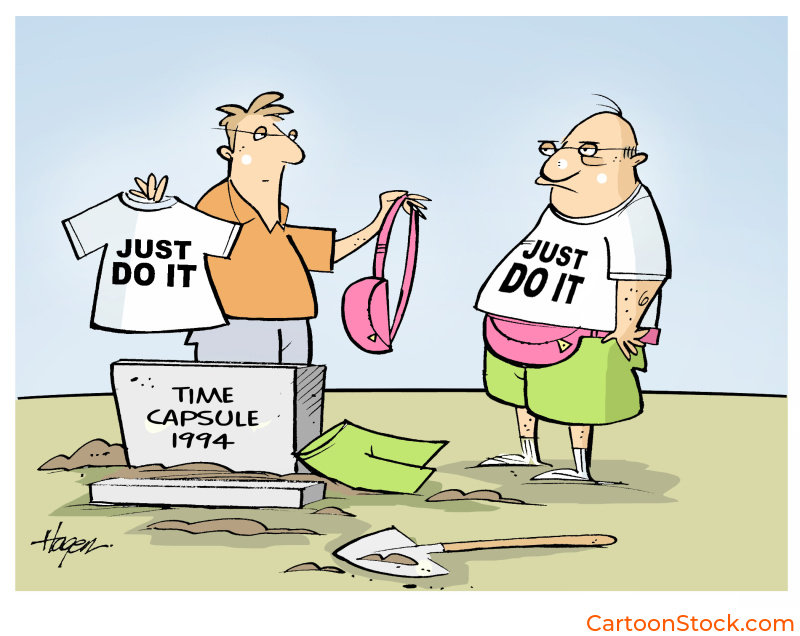
Cartoon Trends: What’s Changed in the Last 30 Years
Part of our History & Art of Cartoons guide →
What a Difference 30 Years Makes
Cartoon trends over the last 30 years have shifted more dramatically than at any point in cartooning history. From carefully inked panels in Sunday papers to viral illustrations made on an iPad at midnight, the evolution of cartoons reflects changes in culture, tech, and how we consume media.
This post takes a look at what’s changed (and what hasn’t) in cartooning since the 1990s—and how today’s trends are shaping the way cartoons are drawn, shared, and appreciated.
The 1990s: The Last Golden Era of Print
In the ’90s, cartoons were still a print-first industry. Newspapers and magazines were the primary stage, and cartoonists had names people recognized. Styles were distinctive, often editorial or gag-driven, and most followed a single-panel or strip format.
Syndication was the dream gig. Cartoonists like Gary Larson (The Far Side), Bill Watterson (Calvin & Hobbes), and Roz Chast (The New Yorker) defined the visual and tonal standards of the decade. Cartoons tackled politics, relationships, work, and absurdity—with inky flair and razor-sharp captions.
Want a taste of the era?
Spotlight: September 1997 offers a time capsule of cartoons that ran in major publications that month.
Spotlight: Cartoons From 25 Years Ago shows how timeless some gags really are—and how others now feel like artifacts.
The 2000s: The Rise of the Webcomic
By the early 2000s, the Internet had arrived—and with it, a new wave of cartoonists. Webcomics flourished. Anyone with a scanner and a sense of humor could publish. The tone became more informal, niche, and personal.
Cartoons started breaking free from editorial standards. Some were raw and weird. Others were poetic or openly autobiographical. And while many styles still mimicked hand-drawn ink, the tools were shifting: Wacom tablets, vector art, and early digital inking tools became more common.
This was also when humor became deeply embedded in Internet culture. Cartoons didn’t just sit quietly in publications, they bounced around forums, blogs, and inboxes.
The 2010s: Social Media Changes Everything
If the 2000s gave cartoonists freedom, the 2010s gave them reach.
Instagram, Tumblr, and Facebook created instant platforms. Cartoonists no longer needed publishers—just a handle and an upload button. And audiences wanted fast, funny, relatable content. Panels shrank, captions got punchier, and the humor leaned toward the absurd or self-aware.
Cartoons became part of people’s scrolling habits, often indistinguishable from memes. But rather than dilute the art form, this gave rise to new voices and formats—from minimalist stick figure comics to rich, character-based cartoon series that lived entirely online.
The 2020s: Cartoons as Content (Everywhere)
Today, cartoons are everywhere. They still live in publications, sure, but they also pop up in newsletters, marketing emails, pitch decks, social media posts, merchandise, and Slack channels.
Cartoonists now work across platforms and purposes. Many adapt their style to suit business needs (clean, brand-safe humor) or lean into expressive, personal work for social media. Retro styles are resurging, while modern tools like Procreate and Photoshop dominate workflows.
10 of the Best Selling Cartoons of 2021 is a great snapshot of what resonated with audiences recently—note the mix of visual styles and themes.
We’ve also seen the rise of themed cartoon collections and licensing packs, helping organizations and creators find humor that fits their tone and audience.
What’s Actually Changed? 6 Big Cartoon Trends
Here’s a quick roundup of major cartoon trends over the last 30 years:
-
Cartoonists are more independent.
Fewer gatekeepers, more self-publishing. -
Formats have become more flexible.
From single panels to carousel posts to animated loops. -
Humor has shifted.
Political and satirical content is still around, but so is relatable humor, personal insights, and dark absurdism. -
Visual styles have diversified.
From precise ink work to scribbly minimalism, the “look” of cartoons is broader than ever. -
Platforms shape design.
Cartoons today are built to be shared—mobile-friendly, square-formatted, and often caption-heavy. -
Cartoons are being used more strategically.
Businesses, educators, and nonprofits all use cartoons to engage audiences, explain ideas, and cut through the noise.
Q&A: Cartoon Trends Over the Last 30 Years
Q: Are traditional cartoon formats like single-panel gags still popular?
A: Very much so. They’ve adapted well to modern platforms—and remain staples in editorial and professional spaces.
Q: Have cartoon styles become more minimal?
A: Yes. Many popular online cartoonists use spare, simplified visuals that highlight the punchline or message.
Q: What’s the biggest shift in cartooning today?
A: Speed and accessibility. Artists can publish instantly and get feedback in real time—changing how cartoons are made and refined.
From Newsprint to Newsfeed
Cartoon trends over the last 30 years show just how much the medium has evolved. Yet despite changing formats, audiences, and technologies, one thing remains true: cartoons still deliver wit, commentary, and joy like nothing else can.
Whether you’re laughing at a retro gag from 1997 or a bold new panel on your phone, cartoons keep adapting, without losing their punch.
Keep Reading
Curious how artistic styles have changed, too?
Read: The Evolution of Cartoon Art: How Styles Have Changed Over Time
Related Posts
How Single-Panel Cartoons Became a Unique Art Form
Coming soon: The Golden Age of Cartoons: A Look at the 1930s to 1950s

